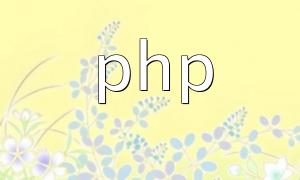In web development or image processing, there are often situations where you need to rotate an image. PHP and Imagick are powerful tools that can help you easily implement image rotation functionality. This article will guide you on how to use PHP with the Imagick library to perform image rotation.
Before we begin, we need to ensure that PHP has the Imagick extension installed. If it is not installed, you can follow these steps to install it:
<span class="fun">sudo apt-get install php-imagick</span>
Once installed, you can verify if the extension is successfully loaded using the following command:
<span class="fun">php -m | grep imagick</span>
If the output includes imagick, the extension has been loaded successfully.
Now, let's go through the basic steps of rotating an image using PHP and Imagick:
First, use the Imagick class constructor to open the image that you want to rotate. Here's an example:
<span class="fun">$image = new Imagick('path/to/image.jpg');</span>
In this example, 'path/to/image.jpg' is the path to the image you want to rotate. Ensure that the path is correct.
Next, you need to set the rotation angle. You can use the setRotation method to do this, as shown below:
<span class="fun">$image->setRotation(90);</span>
The value 90 indicates a 90-degree clockwise rotation. If you want to rotate counterclockwise, you can use a negative value, such as -90.
Next, use the rotateImage method of the Imagick class to perform the rotation:
<span class="fun">$image->rotateImage(new ImagickPixel('none'), 90);</span>
In this example, 90 is the rotation angle. If you want to rotate counterclockwise, you can use a negative value.
Once the rotation is complete, you can either save the rotated image using the writeImage method or output it directly to the browser using echo:
$image->writeImage('path/to/rotated_image.jpg');
echo $image;In this example, 'path/to/rotated_image.jpg' is the path where you want to save the rotated image. You can also save it as other image formats like PNG.
Here's a complete example showing how to use PHP and Imagick to rotate an image:
<?php
$image = new Imagick('path/to/image.jpg');
$image->setRotation(90);
$image->rotateImage(new ImagickPixel('none'), 90);
$image->writeImage('path/to/rotated_image.jpg');
echo $image;
?>Make sure to replace 'path/to/image.jpg' with the actual path of the image, and modify the rotation angle and save path as needed.
By using PHP and the Imagick library, you can easily rotate images. Simply use the relevant methods of the Imagick class to open the image, set the rotation angle, perform the rotation, and output the rotated image. We hope this guide helps you implement image rotation functionality with PHP and Imagick.









